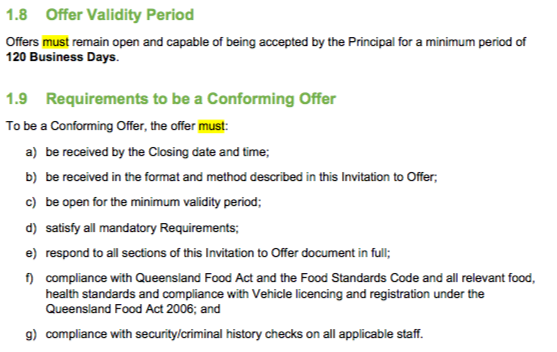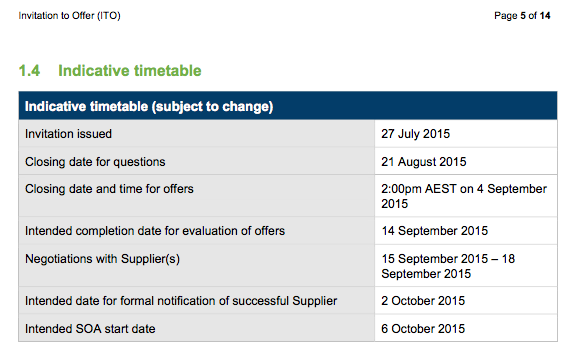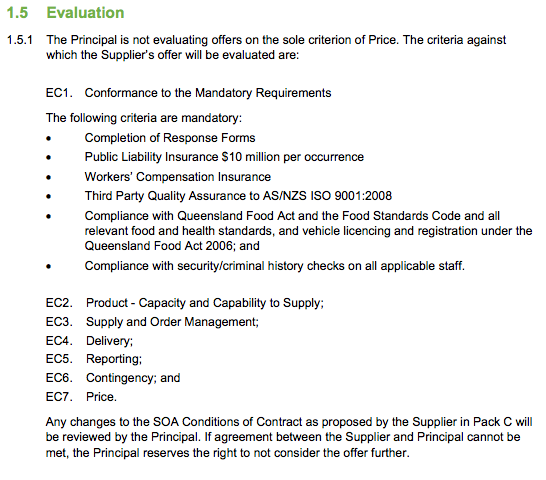Now that 2015 has come and gone, construction professionals are focusing attention on the year ahead. If you're interested in doing business with a government agency, there are many steps you can take to understand their needs and market your business as providing attractive, value for money solutions. You'll need to invest time and resources to enter the government market with success. And you're in luck, because we've talked with procurement officers from Queensland's Department of State Development, Infrastructure and Planning and asked more about tendering for the State and Federal Government.
So why is now the perfect time brush up on how you should read a government tender? Because contractors are saying that "things are getting better" and that the number of construction approvals is rising. In New South Wales especially, authorities approved more than 90,000 applications in the year to June to a total $34 billion worth, said the NSW Local Development Performance Monitor.
Watpac chief executive Martin Monro recently stated that the NSW pipeline 'is just as healthy for future forward work as I have seen in a decade and while residential construction is strong, it's not just one sector – there are a lot of educational, retail and transport projects gaining approval.'
So when you've identified an opportunity to supply to the Australian Government, the next step is to compete for the business. Of course there is no guarantee of success when competing for any business, but there are some basic rules and better practices that will help to ensure your bid for government work has the possible chance of success. It is absolutely vital that you pay careful attention to the requirements set out in the tender documentation.
To help get you started, use the following process to break down the tender and get the information you need.
 1. Highlight all of the WILLs, SHALLs and MUSTs in the specifications
1. Highlight all of the WILLs, SHALLs and MUSTs in the specifications
Can you deliver what is asked?
Yes = move onto step 2
No = rethink your submission, do you need to partner or can you submit an alternative tender (if so contact the procurement officer)
2. Identify if you need more information to quote effectively
Go back through the specifications taking the time to identify any specifications where you need more information to provide a good response, or any specifications that are ambiguous and need clarification.
Send all of the questions/clarification to the procurement officer for them to respond to – this may take up to 48 hours for them to answer. Alternatively they may make the answers available as part of an addendum added to the tendering portal page.
3. Note the contact details and tender deadlines
Go through the Invitation to Offer Details noting:
- Closing date and time
- Contact person
- Offer validity period
- How to lodge the offer
- Proposed timeframe, taking particular note of the period between “commencement date” and “delivery date” – this is the delivery period
4. Note the contract conditions
Go through the Conditions of Offer and the Conditions of Contract:
- Download the standard conditions of offer and contract and read them
- Note anything you don’t agree to work toward and prepare an alternative response
- Note any additional conditions of offer and contract
 5. Consider the evaluation criteria and how weightings
5. Consider the evaluation criteria and how weightings
Go through Offer Evaluation Process and Criteria and note the evaluation criteria and any associated weightings.
6. Get in touch with the procurement officer
Follow up the procurement officer for answers to your questions/clarifications if they have not come back to you within 48 hours.7. Complete Response Forms
Complete all of the forms in Response Forms noting the correct ways to respond. If any forms are not applicable make sure you use the term “This does not apply to this offer because....” – give them a reasonable explanation behind this so they have something to evaluate.
8. Proofread thoroughly against criteria
Go back through the response forms and check against the evaluation criteria. Have you provided the best response you possibly can to each evaluation criteria? If yes, submit your response. If no, include any additional information that will maximise your response against the evaluation criteria.
So now that you know the critical elements of a tender document, it's time to respond to the evaluation criteria by demonstrating what you can do to win the business. The request document should also describe the evaluation methodology including, for example, whether the tender will be assessed under the least cost, numerical scoring or matrix selection method. If you're not sure of what these terms mean, or would simply like to learn more about how government officers are taught to evaluate offers, download our free eBook: Offer Evaluation Methods, which details the three main evaluation guidelines used to award work.

Related Articles

2 hidden hacks and features every tenderer should know about appendices
In the past few years, tendering for government contracts has become an ultra-monitored environment - and not just for tendering parties. The contracts awarded also have significant impacts on the State's economy, on the provision of jobs, and on the development of vital infrastructure and commercial, civic and residential assets for all citizens. With economic factors at play, awarding contracts has never been more contentious and every line of a tender is considered - even the appendices.

NorthLink WA construction to start mid-2016
John Holland Pty Ltd has been awarded the first construction contract for the $1.12 billion NorthLink WA project. In officially announcing the contract today, Minister for Major Projects Paul Fletcher said the contract was a significant step in realising the vision of NorthLink WA.

Tenders open for Sydney Metro: Tunnel & Station Excavation Works
The Australian Government is calling for tenders for the second stage of the Sydney Metro Project, which involves building the twin metro railway tunnels under Sydney Harbour and through the CBD.
Get the latest project news
- updates on Australia's pipeline of state and federal projects
- fresh contract awards from major contractors and builders
If you're looking to contact us about other matters, please contact us.


